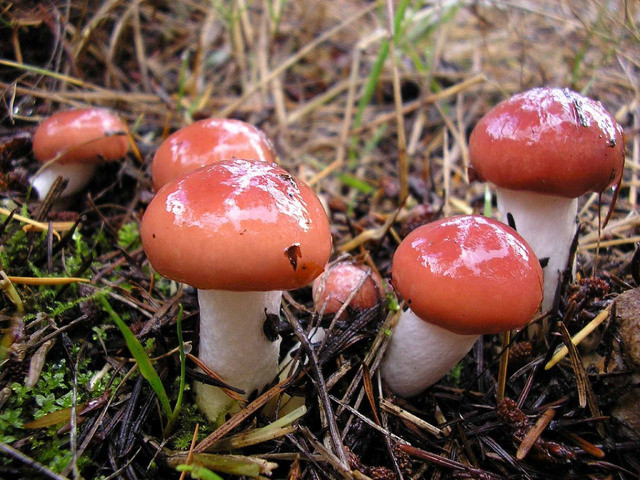Mushrooms Create Own Wind With Puff Of Water Vapor To Send Spores Flying: Study

Mushrooms throw their hopes to the wind, literally. For a fungus, the culmination of reproduction means releasing spores that are carried through the air. Ideally, a fungus wants its spores to get as far away from the parent mushroom as possible. This increases genetic diversity; a mushroom is less likely to end up in the middle of a bunch of closely related fungi that could lead to an incestuous danger zone. Finding a mate in the fungal world is heavily dependent on proximity, and keeping it in the family is a bad idea, long-term health-wise, for mushrooms as well as men. Dispersing one's spores widely also limits the ability of diseases to jump quickly from mushroom to mushroom.
But do mushrooms just hope for a favorable breeze to carry their offspring away? Maybe not. New research is offering a surprising picture of a fungus that exerts a more control over its environment that you might think -- and it all hinges on the mushroom’s inventive method of breaking wind.
“The conventional view is that fungi enjoy little control over the mechanism of dispersal,” a research team led by Trinity College researcher Emilie Dressaire wrote. “A spore falling from the mushroom cap can only hope to be picked up by a favorable air flow and carried away from the gap between the mushroom cap and the ground.”
But when Dressaire and colleagues watched mushrooms release their spores on videos taken with high-speed cameras, they noticed something that suspiciously seemed like more than just random scattering. Eventually, they realized that mushrooms are releasing water vapor along with their spores. The jettisoned water vapor cools the area right around the mushroom, which alters the buoyancy of the air, creating wind.
Thus, "mushrooms are able to disperse their spores even in the most inhospitable surroundings," Dressaire said in a statement Monday.
Dressaire presented her work on spores at the annual meeting of the American Physical Society’s Division of Fluid Dynamics. The research is a collaboration between Dressaire, Marcus Roper of the University of California, Los Angeles, and fellow Trinity researchers Junius Santoso and Lisa Yamada.
"Most people, even scientists, think of mushrooms simply as machines for producing spores," Roper said in a statement. "The more spores each machine produces, the more likely it to successfully colonize new habitats."
But mushrooms, it turns out, aren’t just little spore machines.
"[They] are much more complex than that: they control their local environments, and create winds where there were none in nature," Dressaire said. "That's pretty amazing, but fungi are ingenious engineers."
The study builds on some of Roper’s previous work with mushroom spores, published in the Proceedings of the National Academy of Sciences. In 2010, Roper and scientists from Harvard, Cornell and University of California, Berkeley discovered that mushrooms spew their spores forth in an ingeniously aerodynamic plume. Releasing thousands of spores in a massive plume reduces the drag on individual spores to nearly zero. It’s similar to the “peloton” strategy that cyclists in the Tour de France employ; a pack of bicyclists allows individuals to draft off of each other and expend less energy.
If scientists can better understand how mushrooms and other fungi spread their spores, it could lead to inventive new ways of combating harmful fungal pathogens. In April 2012, a group of scientists estimated in the journal Nature that fungal diseases in five of the world's most important crops consume enough food to feed 600 million people.
© Copyright IBTimes 2025. All rights reserved.





















